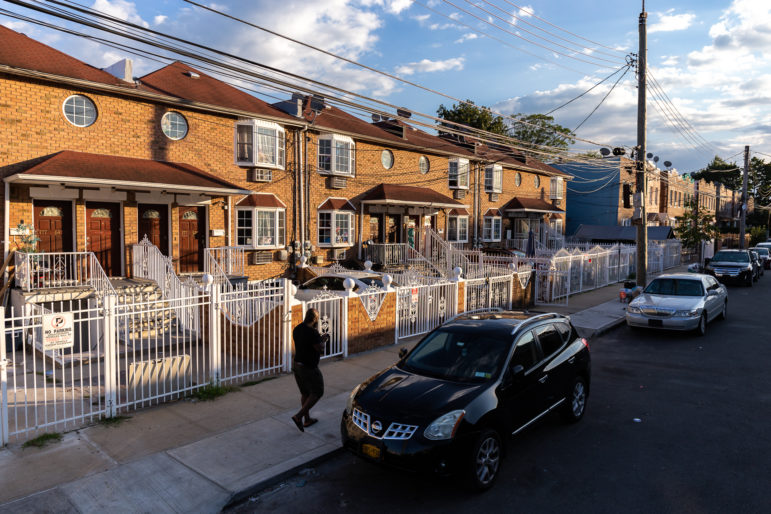“More housing at any income level lowers nearby rents. We progressives should therefore be fighting for new housing with every bone in our bodies.”

Adi Talwar
Homes in Queens.With housing serving as the bedrock of many New York City policy discussions over the last few months, it has become increasingly clear that many fundamentally misunderstand the way that housing markets operate—and, therefore, many self-styled progressives unknowingly make political decisions counter to their stated values. It is time for that to change.
A review of the most contentious land use processes in the last few years—including SoHo/NoHo, Innovation Queens, One45 in Harlem, 9th Street in Gowanus, and the Bruckner rezoning in the Bronx—reveals that opponents repeatedly cite the same concerns: new housing will increase local rents and, therefore, displace existing residents in a community.
To fight for vulnerable residents is the righteous choice—but it must be guided by facts. And the facts are clear. More housing at any income level lowers nearby rents. We progressives should therefore be fighting for new housing with every bone in our bodies.
Consider recent research highlighted by NYU’s Furman Center that shows the economic reality of housing development has the opposite effect on the market from the rhetoric we typically hear.
This new research is a significant development for housing. It has been clear for a very long time that across a metro area, building more housing lowers rents compared with what they would be otherwise. And conversely, limiting housing supply through restrictive zoning or other measures increases rents. But this recent empirical research has shown that both in New York City and in other cities across the country, new housing—even market rate—doesn’t just lower rents across the region, it also lowers nearby rents compared with what they would be without the new homes.
For me, being progressive means fighting for social justice. And a key facet of social justice is standing up for the most vulnerable in society. In New York City, renters’ median household income is $50,000 a year, compared with $98,000 for owners, according to the 2021 Housing and Vacancy Survey. Progressive policies should therefore be designed to help renters given how much more vulnerable they are than homeowners.
Each new building diminishes the pressure on nearby renters by absorbing demand. To put it more simply, every household that goes into a new unit does not outbid a local family for existing housing. It means that the new residential building going up across the street, whether it is affordable or market rate, will help take some pressure off local residents. And the policy implications there are clear: we need more housing in every neighborhood if we are serious about protecting our neighbors.
To be clear, affordable housing is the best kind of development. Members of my organization, the New York State Association for Affordable Housing (NYSAFAH), build 100 percent affordable buildings with subsidies from the city, state, and federal government and offer residents below-market rate with stringent anti-eviction measures regulated by legal agreements with local agencies.
In addition to traditional low-income housing tax credit projects, they renovate public housing buildings for existing tenants, provide supportive and transitional housing to our most vulnerable residents, and develop deeply affordable project-based Section 8 buildings. This is a model for what needs to be done.
But the production of affordable housing is limited by many factors: the availability of land, city budget dollars, and tax-exempt bonds chief among them.
To solve the housing crisis, we therefore need new housing at all income levels. And this research shows that market rate housing is not a negative in a new development—it works in conjunction with affordable housing to address the housing crisis. New affordable housing directly houses New Yorkers who cannot afford market-rate rents, and the new market rate housing addresses the demand problem and helps prevent displacement.
For progressives who care about their constituents, disapproving a rezoning that would produce new housing is cutting off your nose to spite your face. Progressive elected officials should base public policy decisions on what empirical research has shown to be of most benefit to their most vulnerable constituents. And prominent progressive elected officials, such as Representative Alexandria Ocasio-Cortez, Queens Borough President Donovan Richards, and Senator Elizabeth Warren, have voiced their support for new housing development.
More housing is the progressive choice.
Lloyd is the director of policy at the New York State Association for Affordable Housing.









One thought on “Opinion: More Housing is the Progressive Choice”
Therefore, in order to tackle the housing crisis, we need to construct new homes that are within reach of people of varying financial means.